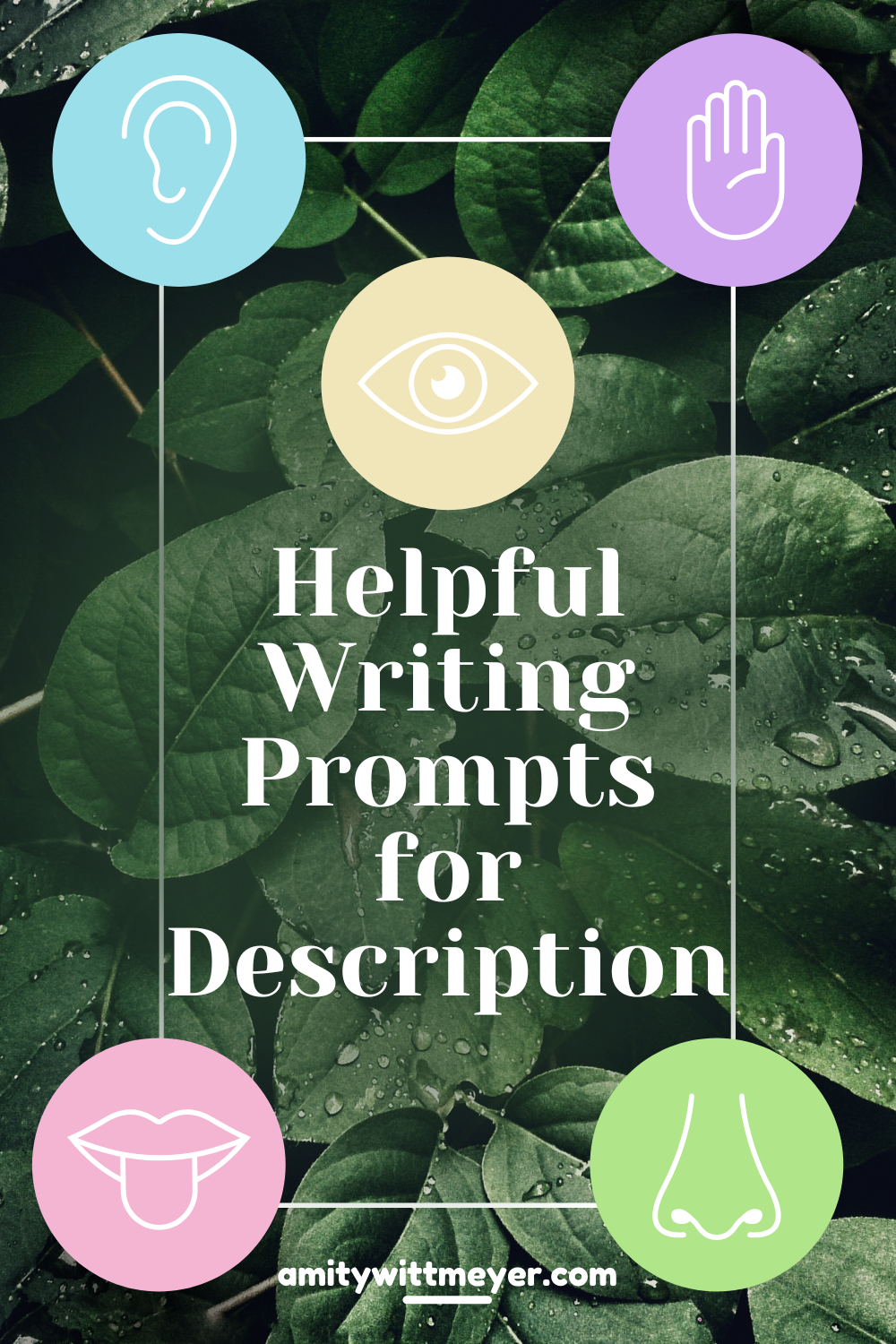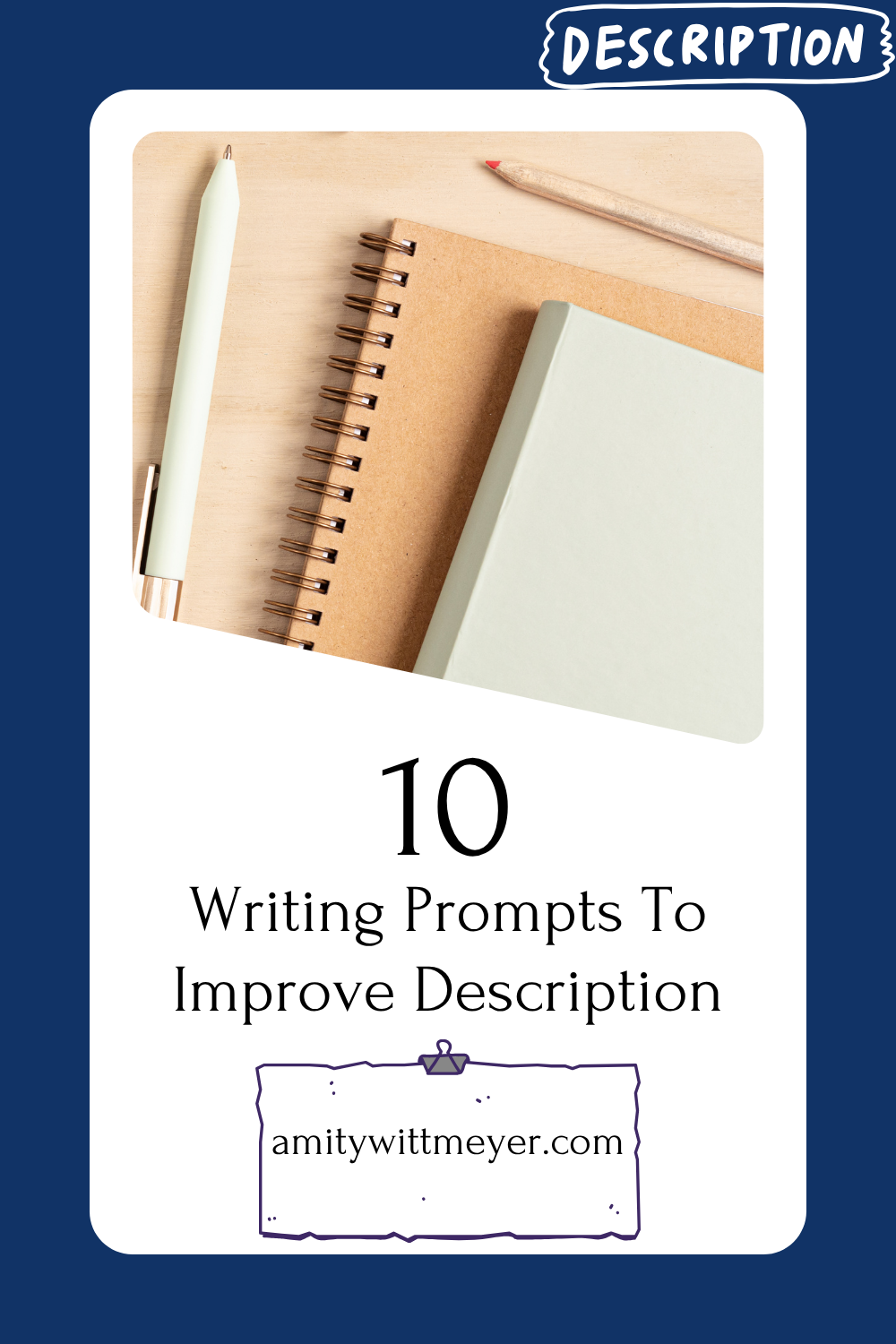Intro
Ultimately, description helps writers invoke emotions and meaning into their writing. In addition, it sets the scene and creates immersive details to add depth to your piece. By the end of this blog post, you’ll have read some writing prompts to draw inspiration from to practice descriptive writing.
So, are you a beginner? Ready to create detailed writing and finally strengthen your voice? Truthfully, writing can feel daunting, especially for beginners. However, if you are looking to write consistently, writing prompts can be a great way to get the ball rolling.
How It Works
To begin, the first question is: what will your story be about? The very first aspect of writing you should focus on is description: setting the scene, writing an event’s play out, describing a character’s feelings and actions.
Therefore, here are writing prompts to practice your descriptive language. Read through them, pick one, and elaborate upon it. Or, even better, try to incorporate the sentence naturally into a story of your own.
Writing prompts are great with friends, peers, or for a class activity. Writing prompts are a great way for you to practice writing about various things and utilize new techniques. Also, by the end, when you share with others who wrote with the same prompt, you can see how creative and diverse those around you are when it comes to creativity and each individual’s writing process.
What is Descriptive language?
Descriptive language invokes images and emotions in your reader. So, you accomplish this through the use of figurative words or phrases. Such words or phrases should be detailed, utilizing sensory elements. It is essential!
To quote Medium in their article, “Enhance Your Descriptions with These Writing Prompts,”
“Physical descriptions can carry symbolism, while emotional descriptions reveal the inner workings of your characters in a way that dialogue simply can’t.”
In summary, description is used in all stories, whether to describe how something looks or feels. Without description, your story will lack the necessary depth for your reader.
Use Your Senses
Jumping in, description uses sensual details. What should your reader see, hear, smell, taste, feel, and believe about a place, person, or thing? Drawing from my previous blog post, “Identify Your Writing Process in Six Easy Steps,” you need to write like a painter.
A painter sees a blank canvas and pictures what the final result will be. However, before they start painting, they ask themselves descriptive questions. For example, if the painting is set during nighttime, a painter will understand that the colors of their work should reflect that. If there is action in the painting, the painter will highlight the reaction.
How would your subject react? Since there is this obstacle, what will change about the scene?
Below are prompts to help you get into the mindset of writing like a painter. In consequence, you will need to ask questions to imagine your scene before it plays out. Remember, you are writing about something you envision, yet your reader cannot until you use description to immerse them in the scene with you.
Elaborate or Insert
Description is the goal here. So, for your task, read a prompt and elaborate. Each prompt is specifically working to get your brain to think about description. Therefore, create the scene each prompt invokes in you. Also, get your reader to fall into your scene as well.
Therefore, ask yourself what sensory descriptions you can imagine if you were in your story. Normally, writers use description to describe what a reader would see. However, get creative, not repetitive. If you were in your scene, wouldn’t you describe what you heard? Smelled? What you felt?
Description is wonderful. You can scare your reader. You can excite them. Or, get them to empathize with another’s experience. Description is in your hands now. What happens next?
How To Use a Prompt to Track Description
Remember, you can either put a time limit on your activity or take days to finish. A good way to utilize time is to start writing off a prompt for five minutes. Afterwards, track your skills.
- Go back and underline what descriptive words or phrases you used.
- Lastly, count them up and investigate.
- Ask yourself: are you using more than one sense to describe your scene? Can a reader clearly picture themselves inside your story?
- Share your work with a friend and have them review your work the same way.
- After, try to write on a different prompt for more than five minutes.
- Now, go back and investigate your descriptive language.
- Compare both prompts to each other.
- How did you improve your description?
Descriptive Writing Prompts
- The sky held a multitude of abstract clouds, mixing malevolently, darkening the earth below just as they ran out of gas.
- Their flashlight painted the cave walls with fury while the tapping of legs haunted their ears.
- Across the road, a stranger stopped in their tracks. Their boots audibly smacked the pavement while he turned and watched her.
- Upon looking at the house, one could assume a mad person resided inside.
- The smell of the room caused her to physically scrunch her nose as if that would stop it from entering.
- Not only slimy, but cold too; unnaturally frigid for a living being.
- Their grandma rested her hand on his shoulder, and her vanilla lotion and cigarette-sprayed hair stirred the air around her.
- They cut them off and dismissed them once again, shaking their head and angrily mumbling something coarse and violent.
- Bodily fluids, rust, and hand sanitizer are what Joy first remembered smelling when they handed her her first child, still dripping in blood.
- Splash! The deck’s old paneling finally gave way, and they found themselves alone, plunged into jellyfish-infested waters.
Conclusion
Description is necessary for writing. In summary, when it comes to writing, it is important to start with the basics and build your skills. That way, you ensure you are improving your own writer’s voice and immersing your reader.
If you are still feeling low on inspiration after these prompts, check out some more. I recommend the article from Writer’s Digest, “100 Creative Writing Prompts for Writers.”


